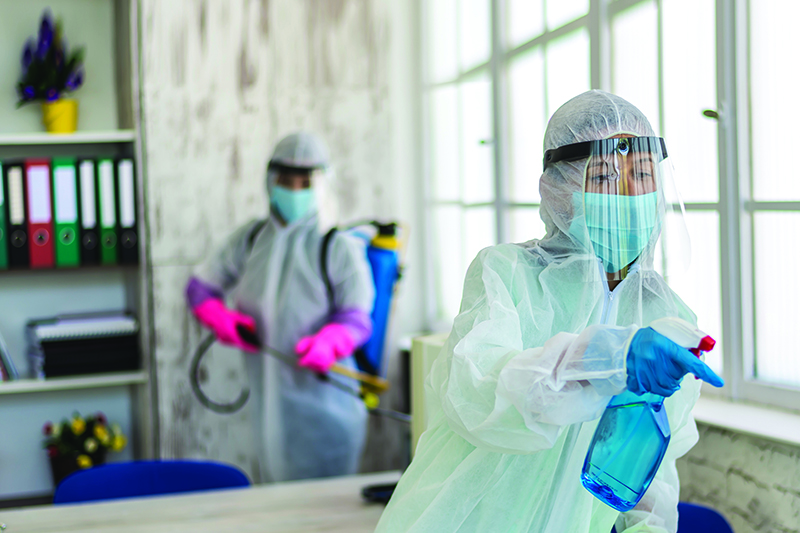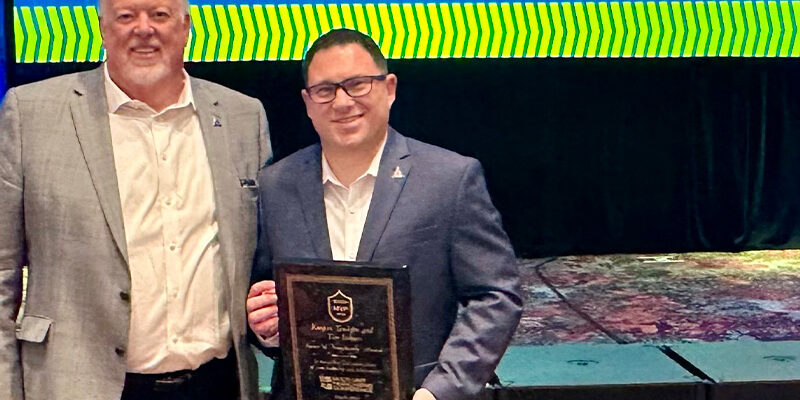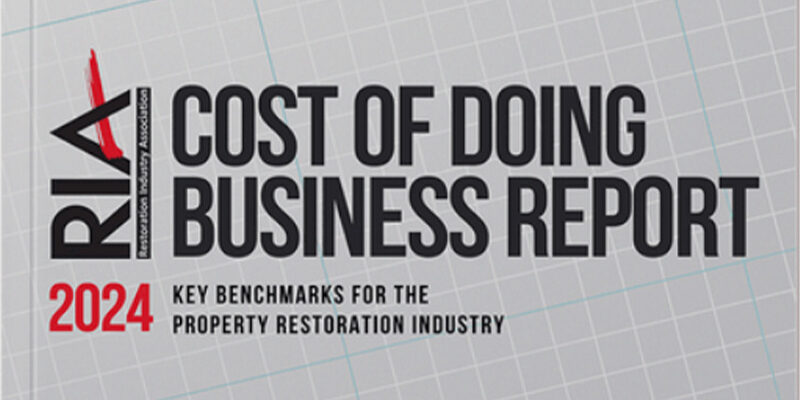Protect Your Team With a PPE Program

By Dr. Gavin Macgregor-Skinner
Hazards exist everywhere we work, and protecting workers is essential. Injuries are preventable. Personal protective equipment (PPE) should be used by all cleaning professionals with regular and challenging training to keep skills sharp. PPE training must encourage the trainee to behave as if the exercise was real work in order to strengthen a culture of safety within our industry.
What is PPE?
PPE includes the clothes and equipment worn by a worker to minimize exposure to identified hazards. Examples of PPE include clothing that covers arms and legs, shoes, masks, respirators, gloves, aprons, full body suits, and protecting your eyes, nose, and mouth. PPE does not reduce the hazard or provide total protection.
What is the role of PPE?
When a hazard cannot be removed or controlled adequately, personal protective equipment may be used to reduce the risk to the worker.
Controlling a hazard at its source is the first choice because this method will eliminate it from the workplace altogether or isolate it from the worker. This approach may require substitution of a material with a nonhazardous material, isolation of hazards, ventilation, addition of safety features to existing equipment, redesign of the work processes, or purchase of new equipment. Administrative controls such as work practices, education and training, equipment maintenance, and washing your hands with soap and water are also ways to control hazards.
What principles guide a PPE program?
Before any decision is made to begin or expand a PPE program, it is important to understand the underlying principles of protection. You need to consider:
- protection of workers,
- compliance with applicable laws, regulations, standards, and guidelines,
- compliance with company policies,
- technical feasibility.
Your PPE program should be designed and managed for control and continuous improvement using the plan-do-check-act cycle (PDCA) that identifies hazards, conducts risk assessments, evaluates all possible control methods, integrates various solutions, and reexamines the controls frequently to make sure that the hazard continues to be controlled.
When should PPE be used?
PPE is used to reduce the likelihood of exposure to injuries from physical, chemical, ergonomic, or biological agents. Always remember: A hazard is not “gone” when PPE is used, but the risk of injury may be reduced. PPE should only be used:
- as a short-term measure before elimination, substitution, engineering, or administrative controls are implemented;
- where other controls are not available or adequate;
- during emergency situations.
How do you design a PPE program?
The first step in the development of a PPE program is to identify the hazards at the worksite. A hazard identification and risk assessment should involve health and safety discussions with your workers where you collaborate to examine work practices, processes, job procedures, equipment, products, workplace layout, and individual factors.
When hazards are present, workers must use appropriate PPE. Employers’ responsibilities include providing instruction on what PPE is needed, maintenance and cleaning of equipment, and educating and training workers on proper use of PPE.
A PPE program requires commitment and active participation at the planning, development, and implementation stages from all levels: senior management, supervisors, and workers. An effective PPE program consists of:
- hazard identification
- risk assessment
- selection of appropriate controls
- selection of appropriate PPE
- fitting and familiarization
- education and training
- management support
- maintenance
- auditing of the program
A PPE program must be thoughtfully planned, developed, and implemented to create a culture of safety rather than one of fear. The beneficial effects of the program should be publicized widely, and workers should be involved in all stages of the process. If possible, try to offer flexibility in various models of the required PPE, but ensure you maintain appropriate protection. Removing PPE for even a short period of time could lead to injuries, so it is important that the equipment is as comfortable as possible.
When making changes to PPE, allow time for workers to choose a style that fits best and become accustomed to wearing the PPE. Do not impose consequences for noncompliance until the competency for use has been met; however, it is not acceptable to gradually phase in a PPE program when there is a need to enter hazardous workplaces, or where failure to use the equipment poses a significant risk of injury.
What steps are involved in the selection of PPE?
Your risk assessment has identified the need for PPE, the next task is to select the proper type. Now you need to determine the degree of protection required and the appropriateness of the equipment to the situation.
The degree of protection and the design of PPE must be integrated because both affect efficiency, wearability, and worker acceptance. I would recommend using this list as a guideline for selecting PPE but add any other items that are important to your business:
1 | Choose PPE to match the hazards
Workers may be exposed to hazards that require multiple types of PPE for protection. For example, working with cleaning products or disinfectants may require respiratory, skin, and eye protection. Read the manufacturers’ label and review Safety Data Sheets as they indicate the hazards associated with specific products and make PPE recommendations.
2 | Obtain advice
Make decisions based on the laws, standards, risk assessment, worker acceptance, and types of PPE available. Ask questions and seek advice. Try and test PPE before final approval and procurement.
3 | Involve workers in evaluations
Involve workers in the selection of specific models and gather information regarding fit, comfort, and worker acceptability. PPE should be individually assigned. It is not one-size-fits-all.
4 | Consider physical comfort
If a PPE device is heavy, uncomfortable, or poorly fitted it is unlikely to be worn.
5 | Evaluate cost considerations
Calculate the cost of reusable and disposable PPE. Identify what is more economical without increasing risk.
6 | Review performance requirements of standards
Performance requirements of standards, such as eye and face protection, must be reviewed to ensure that exposure to injury will be minimized or eliminated by using PPE. If PPE is exposed to hazards greater than those for which it is designed, it will not deliver adequate protection.
7 | Check the fit
Fit each worker with PPE on an individual basis. Each worker should be trained on how to wear and maintain PPE, and training must be repeated with individual competencies regularly assessed.
In some cases, individual fitting programs, such as N95 respirators or eye protection, should be carried out by qualified personnel.
8 | Perform regular maintenance and inspections
The effectiveness of PPE requires proper maintenance that includes inspection, care, cleaning, repair, and storage. The Buddy System is a procedure in which two or more workers operate together to maintain PPE. Additionally, conduct inspections before and after using PPE to identify damaged or malfunctioning equipment. Establish procedures for workers to get new PPE or replacement parts for damaged PPE.

Use the Buddy System where two workers operate together to ensure proper PPE procedures are followed.
9 | Conduct continuous education and training
Education and training on when, where, why, and how to use PPE must be conducted to ensure proper compliance. Workers need to know why PPE is important, how to fit and wear PPE, how to adjust it for maximum protection, how to care for it, and how to dispose of it safely.
You should not be telling workers to wear a respirator just because management and/or legislation requires it. If the respirator is intended to prevent lung disorders, the workers must be informed of the hazards. Education and training programs should continue on a regular basis.
10 | Audit the program
As with any system, the effectiveness of the PPE program should be monitored by inspection of the equipment and auditing of procedures. Compare your safety performance data to before the program began or whenever PPE changes. Random unannounced audits can help ensure safety. Audits can be tiered for greatest effectiveness—self-audits can be performed by workers and internal audits can be performed by supervisors.
Known challenges with PPE programs
PPE programs are often plagued by the belief that once a piece of equipment is put on, the worker is totally protected. This is a false sense of security. PPE should not be used when hazards are greater than those for which that specific piece of equipment is designed.
When it comes to the evaluation of potential hazards, uncertainties need to be considered. Wearing PPE should not in itself create a greater danger. The purpose of PPE is to protect you, and not create issues when doing that.
Regulatory agencies require that PPE not be used unless the employer has taken all the necessary measures in terms of engineering controls, work practices, administrative controls, and hygiene to control the hazard. Since the goal of an occupational health and safety program is to prevent worker injury and illness, PPE cannot be the only protection option.
The use of PPE does not prevent an incident from happening. It does not eliminate the hazard. It only minimizes the exposure and/or may reduce the severity of injury or illness.
References:
United States Department of Labor Occupational Safety and Health Administration (OSHA) addresses Cleaning Industry hazards in specific OSHA standards for general industry. See www.osha.gov/cleaning-industry/standards accessed July 18, 2022
National Institute for Occupational Safety and Health (NIOSH) Directory of Personal Protective Equipment. NIOSH is located at the U.S. Centers for Disease Control and Prevention (CDC), in the U.S. Department of Health and Human Services (HHS) See www.cdc.gov/niosh/ppe/ accessed July 18, 2022
Dr. Gavin Macgregor-Skinner is the senior director of the Global Biorisk Advisory Council™ (GBAC), a division of ISSA. As an infection prevention expert and epidemiologist, he works to develop protocols and education for the global cleaning industry, helping facilities, businesses, organizations, and cleaning professionals to create safe environments.












